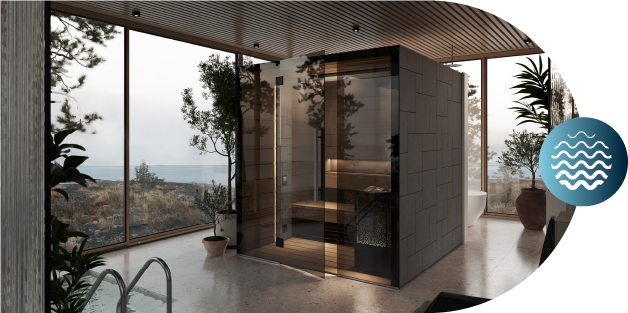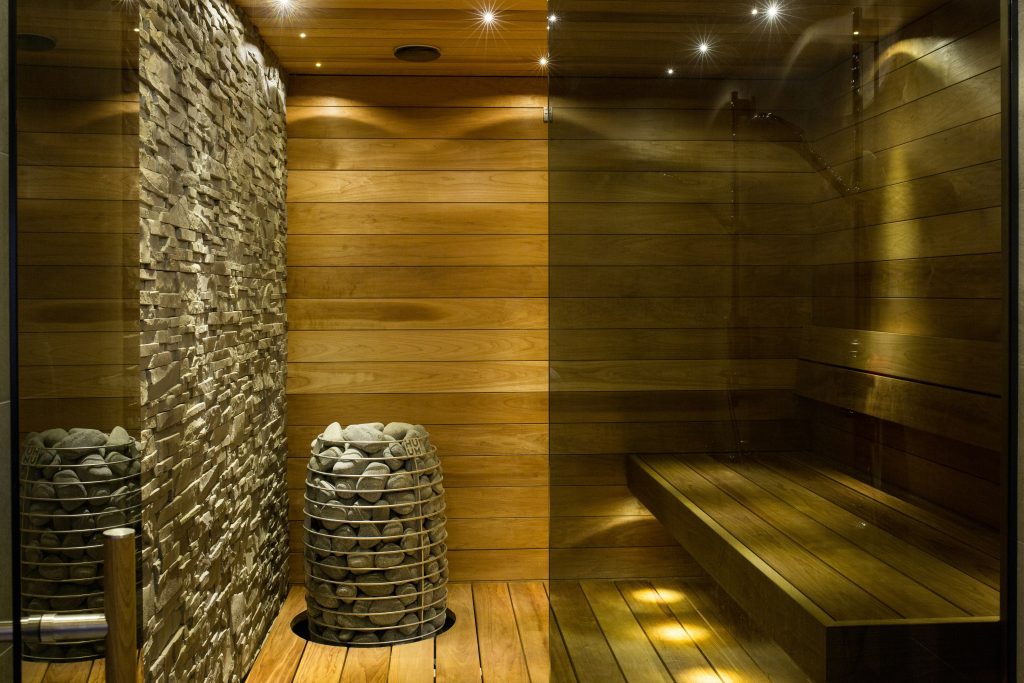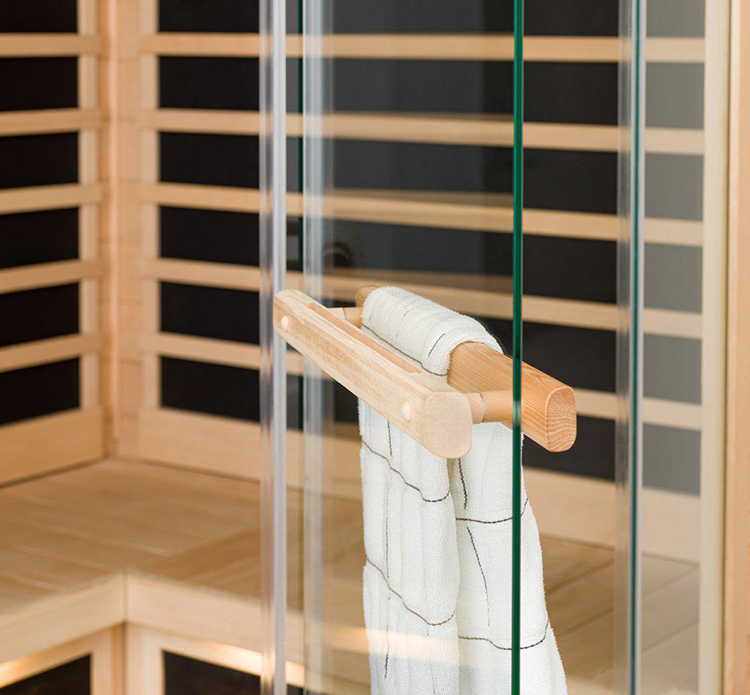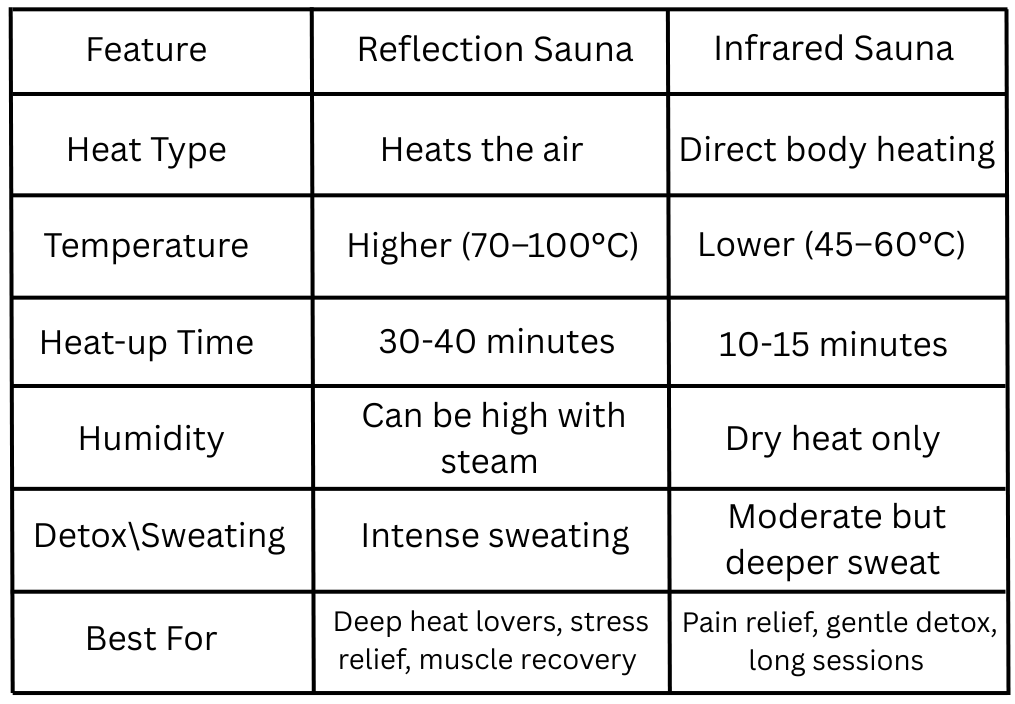A Complete Guide to Choosing which is best for you:
Saunas have long been celebrated for their soothing heat and wellness benefits, but not all saunas are created equal. When it comes to sauna therapy, you will experience different effects and benefits from the varying levels of heat produced from a sauna. Whether you are shopping for a home sauna to lounge in or want to prioritise your mental wellness, you have most likely came across two main types of saunas, Infared and reflection (also known as traditional saunas) but what is the difference and how can this effect what sauna you choose?
What are Reflection Saunas?
Reflection Saunas come in a variety of different designs and models, these can look like traditional saunas which are classic wooden rooms with benches, heated by a stove and rocks or they can look more modern with a dark exterior and smoke glass front. Reflection saunas use a stove to heat the air and therefore warm your body up; this will be the classic sauna that many are familiar with.


How Reflection Saunas Work:
Inside the cabin, heat is generated by either an electric heater or a traditional wood burning stove, depending on the setup. The electric heater offers consistent, controlled hot air at the push of a button, while the wood burner provides a more rustic and authentic experience, with the scent of burning wood and the crackle of flames adding to the atmosphere.
As the heater warms the air within the enclosed space, that hot air begins to blanket your body, gradually raising your core temperature. This process encourages deep relaxation, improved circulation, and the release of built up tension in your muscles.
The temperature inside the cabin typically ranges between 70°C and 100°C, depending on personal preference and the type of heater used. For those who enjoy a more intense and steamier environment, water can be carefully poured over the heated sauna stones. This will produce an immediate burst of steam, which increases the humidity and creates a more powerful heat that clings to the skin and intensifies the overall effect.
This combination of dry heat and optional steam makes for a deeply therapeutic experience, promoting detoxification, relaxation, and a sense of well-being.
Benefits of Reflection Saunas
The heat inside the cabin promotes deep, full body sweating, one of the body’s most effective ways to detox. As your core temperature rises, sweat helps flush out toxins, cleanse the skin, and leave you feeling refreshed.
This intense heat also boosts cardiovascular activity, increasing your heart rate, breathing, and circulation, like moderate exercise. Improved blood flow enhances the flow of oxygen, aiding muscle recovery and boosting energy.
Beyond physical benefits, the cabin provides mental and emotional benefits, encouraging deep relaxation, mental clarity, and stress relief. It’s an ideal space for quiet reflection and unwinding.
When you pour water over the hot stone it creates steam, this is effective for relieving muscle tension, soothing aches, and improving flexibility.
Things to consider:
Reflection saunas typically take 30-40 minutes to fully heat up, making it essential to plan for its use. Proper ventilation is crucial during operation to ensure airflow and prevent overheating, especially for appliances that produce high heat or burn fuel. Additionally, it must be installed in a heat safe area to avoid damaging surrounding materials or becoming a fire risk.
While effective at generating warmth, high temperatures may be uncomfortable for some individuals, particularly those sensitive to heat. For people with certain health conditions, such as heart issues or blood pressure concerns, it’s best to avoid using this appliance. Heat can put additional strain on the cardiovascular system, increasing the risk of heart-related issues, dizziness, or fainting. Those with high blood pressure may find that extreme temperatures can boost their condition, while those with low blood pressure could experience lightheadedness or a sudden drop in blood pressure. Always consult a healthcare professional before use if you have any underlying health conditions.
What are Infared Saunas?
An infrared sauna uses infrared panels to emit radiant heat that penetrates the skin directly, without significantly heating the air around you. They can be designed to look like traditional saunas and are also a cheaper alternative to them, as they use less energy and operate at lower temperatures.


Benefits of Infrared Saunas
Infrared saunas use infrared light to heat your body directly, rather than warming the air around you. This infrared light penetrates the skin and heats your body from the inside out, providing a deeply soothing experience. Unlike traditional saunas, which heat the air to high temperatures, infrared saunas operate at lower temperatures, typically between 45°C and 60°C. This allows for a more comfortable and tolerable session, as you feel a gentle, warming sensation on your skin without the intense heat.
There are many benefits of infrared saunas. Deep tissue penetration helps to relieve joint and muscle pain, making them ideal for athletes or those recovering from physical exertion. Infrared saunas promote sweating even at lower temperatures, which aids in detoxification by helping the body flush out toxins. Additionally, they improve circulation and promote skin health by increasing blood flow to the skin’s surface. Many people use infrared saunas for inflammation reduction, stress relief, and chronic pain management, as they offer a non invasive and relaxing way to support the body’s natural healing processes.
Things to consider:
Infrared saunas use infrared light to directly heat your body, offering a gentler, more targeted experience compared to traditional saunas, which heat the air around you. Infrared saunas typically operate at lower temperatures, while traditional saunas reach much higher temperatures. Some users miss the intense heat and humidity of traditional saunas.
Health Considerations: Both saunas may not be suitable for individuals with health conditions like infections, bleeding disorders, joint issues, or pregnancy. Heat can aggravate certain conditions, so it’s important to consult a healthcare provider before use.
When you pour water over the hot stone it creates steam, this is effective for relieving muscle tension, soothing aches, and improving flexibility.
If you are unsure, make sure to consult your doctor for their opinion.
Which Sauna is Better?

So, if you prefer a more intense heat experience and want to target recovery and relief then the reflection sauna is for you, if you want to prioritise detoxing and longer sessions to work on pain relief, then your match is infact the infrared sauna.
